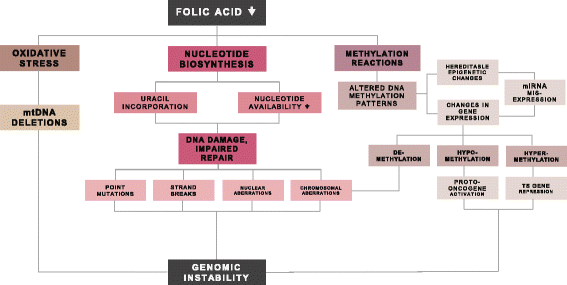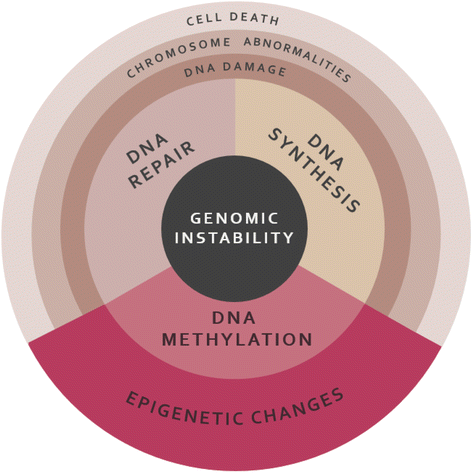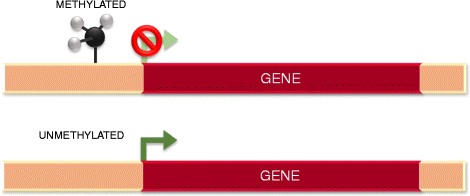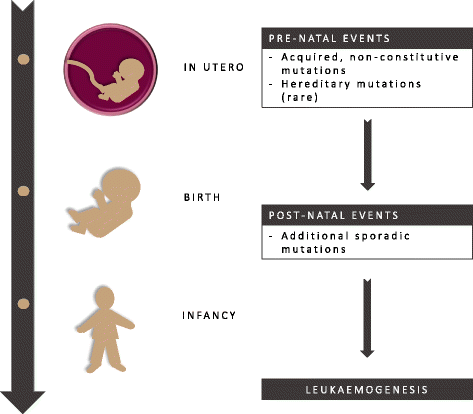Folate deficiency as predisposing factor for childhood leukaemia: a review of the literature
- PMID: 28588742
- PMCID: PMC5455200
- DOI: 10.1186/s12263-017-0560-8
Folate deficiency as predisposing factor for childhood leukaemia: a review of the literature
Abstract
Background: Folic acid and its derivates, known as folates, are chemoprotective micronutrients of great interest because of their essential role in the maintenance of health and genomic integrity. The supplementation of folic acid during pregnancy has long been known to reduce the risk of neural tube defects (NTDs) in the foetus. Folate metabolism can be altered by many factors, including adequate intake through diet. Folate deficiency can compromise the synthesis, repair and methylation of DNA, with deleterious consequences on genomic stability and gene expression. These processes are known to be altered in chronic diseases, including cancer and cardiovascular diseases.
Main body: This review focuses on the association between folate intake and the risk of childhood leukaemia. Having compiled and analysed studies from the literature, we show the documented effects of folates on the genome and their role in cancer prevention and progression with particular emphasis on DNA methylation modifications. These changes are of crucial importance during pregnancy, as maternal diet has a profound impact on the metabolic and physiological functions of the foetus and the susceptibility to disease in later life. Folate deficiency is capable of modifying the methylation status of certain genes at birth in both animals and humans, with potential pathogenic and tumorigenic effects on the progeny. Pre-existing genetic polymorphisms can modify the metabolic network of folates and influence the risk of cancer, including childhood leukaemias. The protective effects of folic acid might be dose dependent, as excessive folic acid could have the adverse effect of nourishing certain types of tumours.
Conclusion: Overall, maternal folic acid supplementation before and during pregnancy seems to confer protection against the risk of childhood leukaemia in the offspring. The optimal folic acid requirements and supplementation doses need to be established, especially in conjunction with other vitamins in order to determine the most successful combinations of nutrients to maintain genomic health and wellbeing. Further research is therefore needed to uncover the role of maternal diet as a whole, as it represents a main factor capable of inducing permanent changes in the foetus.
Keywords: Cancer; Childhood leukaemia; DNA methylation; Folates; Folic acid; Genomic health.
Figures






References
-
- Sporn MB. Approaches to prevention of epithelial cancer during the preneoplastic period. Cancer Res. 1976;36(7 Part 2):2699–2702. - PubMed
-
- Sporn MB, Dunlop NM, Newton DL, Smith JM. Prevention of chemical carcinogenesis by vitamin A and its synthetic analogs (retinoids) InFederation Proc. 1976;35(6):1332–1338. - PubMed
-
- Institute of Medicine (US) Standing Committee on the Scientific Evaluation of Dietary Reference Intakes. Dietary reference intakes for thiamin, riboflavin, niacin, vitamin B6, folate, vitamin B12, pantothenic acid, biotin, and choline. Washington (DC): National Academies Press (US); 2000. - PubMed
Publication types
LinkOut - more resources
Full Text Sources
Other Literature Sources

